In the logistics and transportation industry, understanding the intricate details of container dimensions and their compatibility with various trailers is paramount. At CarMax Vehicle, we specialize in manufacturing high-quality semi-trailers meticulously designed to accommodate diverse containers, ensuring seamless transportation and operational efficiency. This guide delves deep into the factors influencing container height compatibility with trailers, providing you with the knowledge needed to optimize your logistics processes.
Table of Contents
- Standard Container Heights Explained
- Types of Trailers for Container Transport
- Key Factors Affecting Container Height Compatibility
- CarMax Vehicle’s Trailer Solutions
- Regulatory Considerations and Compliance
- Maximizing Efficiency: Loading and Securing Containers
- Technological Innovations in Trailer Design
- Choosing the Right Trailer for Your Container Needs
- Maintenance and Longevity of Trailers
- Frequently Asked Questions
Standard Container Heights Explained
Understanding container dimensions is the first step in ensuring compatibility with trailers. Containers come in various sizes, with height being a crucial parameter.
| Container Type | External Height (Standard) | External Height (High Cube) |
|---|---|---|
| 20-foot | 8 ft 6 in (2.59 m) | 9 ft 6 in (2.90 m) |
| 40-foot | 8 ft 6 in (2.59 m) | 9 ft 6 in (2.90 m) |
| 45-foot | 9 ft 6 in (2.90 m) | 9 ft 9 in (2.97 m) |
Standard vs. High Cube Containers: High cube containers offer an additional foot in height, providing extra storage space, which can be advantageous for certain cargo types. When selecting a trailer, ensuring sufficient vertical clearance is essential to accommodate both standard and high cube containers.

Types of Trailers for Container Transport
Different trailer types are designed to handle specific container sizes and weights. The primary trailers used for container transport include:
- Container Chassis: Specifically designed to carry containers, these trailers feature twist-lock mechanisms to secure containers on the chassis.
- Flatbed Trailers: Versatile trailers that can transport a variety of cargo, including containers, provided proper securing mechanisms are in place.
- Step Deck Trailers (Drop Deck): Ideal for transporting taller containers where height restrictions are a concern, as they have a lower deck height.
- Double Drop Trailers: Feature a dual-deck system, allowing for taller containers by lowering the trailer deck in the middle.
Key Factors Affecting Container Height Compatibility
Several factors influence whether a container’s height is compatible with a given trailer:
Physical Dimensions
- Container Height: As outlined, containers come in standard and high cube heights.
- Trailer Deck Height: The height of the trailer from the ground affects container compatibility, especially concerning overhang at loading and unloading points.

Clearance
- Roadway Clearance: Ensuring that the combined height of the container and trailer does not exceed road clearance limits is critical to avoid accidents and legal issues.
- Bridge and Tunnel Restrictions: High containers may not pass through certain infrastructure, necessitating careful route planning.
Weight Distribution
- Weight Limits: Both trailer and road regulations impose weight limits. Proper distribution ensures safety and compliance.
- Axle Configuration: Trailers with multiple axles can carry heavier containers while maintaining stability.
Securing Mechanisms
- Twist Locks: Essential for stabilizing containers on chassis trailers.
- Straps and Chains: Used in flatbed and step deck trailers to secure containers effectively.

CarMax Vehicle’s Trailer Solutions
At CarMax Vehicle, our trailers are engineered to meet the highest standards of durability and compatibility with various container sizes. Our product lineup includes:
CarMax Standard Container Chassis
- Design: Robust frame with integrated twist-locks for secure container placement.
- Capacity: Accommodates both 20-foot and 40-foot containers with ease.
- Features: Lightweight materials for fuel efficiency without compromising strength.
CarMax High Cube Compatible Trailers
- Adaptability: Designed with increased vertical clearance to support high cube containers.
- Safety: Enhanced securing mechanisms to prevent shifting during transit.
- Technology: Equipped with suspension systems that absorb road vibrations, protecting delicate cargo.

CarMax Step Deck Trailers
- Low Deck Height: Facilitates the transport of taller containers without exceeding road height limits.
- Versatility: Suitable for a wide range of cargo beyond containers, providing multi-functional use.
- Durability: Constructed with corrosion-resistant materials for longevity in various environments.
Regulatory Considerations and Compliance
Compliance with local, national, and international regulations is non-negotiable in container transport. Key regulatory aspects include:
Maximum Height Restrictions
- Federal and State Laws: Vary by region; generally, the maximum allowable height ranges between 13.5 to 14 feet.
- International Standards: The International Maritime Organization (IMO) sets standards for container dimensions that must align with trailer specifications.

Weight Limits
- Gross Vehicle Weight (GVW): Ensures the combined weight of the trailer, container, and cargo does not exceed legal limits.
- Axle Weight Distribution: Critical for maintaining vehicle stability and road safety.
Safety Standards
- Brake Requirements: Trailers must be equipped with effective braking systems to handle the additional mass of containers.
- Lighting and Signage: Proper lighting and reflective markings enhance visibility and safety during transit.
Maximizing Efficiency: Loading and Securing Containers
Efficient loading and securing of containers are essential for safe and cost-effective transportation.
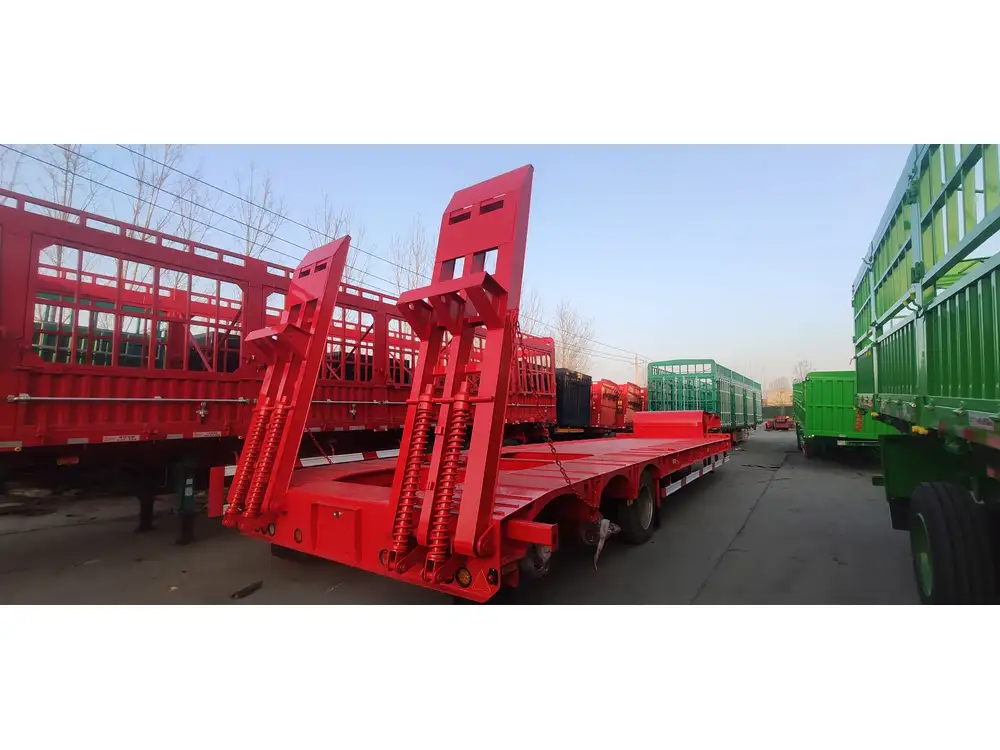
Loading Techniques
- Even Weight Distribution: Balances the load to prevent trailer swaying and reduce wear on the suspension system.
- Strategic Placement: Heavier items placed at the bottom to lower the center of gravity, enhancing stability.
Securing Methods
| Securing Method | Description | Best For |
|---|---|---|
| Twist Locks | Mechanism that locks containers to the chassis | Standard container chassis |
| Straps and Chains | Used to secure containers on flatbeds and step decks | Versatile applications |
| Rigid Clamps | Provide extra security for high-value or sensitive cargo | High-risk shipments |
Inspection and Maintenance
- Pre-Trip Inspections: Ensure all securing mechanisms are intact and functioning correctly.
- Regular Maintenance: Keeps trailer components in optimal condition, preventing failures during transit.
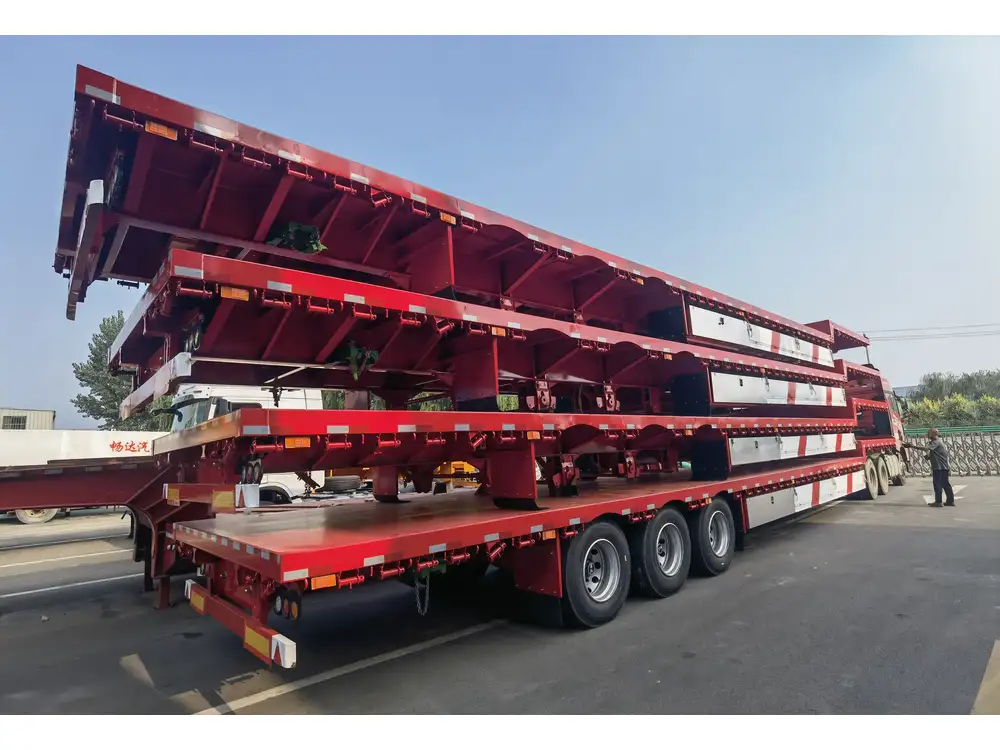
Technological Innovations in Trailer Design
Advancements in technology have revolutionized trailer design, enhancing container height compatibility and overall performance.
Smart Trailers
- Telematics Systems: Offer real-time monitoring of trailer conditions, including height clearance alerts.
- Remote Diagnostics: Allow for early detection of potential issues, reducing downtime and maintenance costs.
Aerodynamic Enhancements
- Streamlined Designs: Reduce wind resistance, improving fuel efficiency and increasing payload capacity.
- Height Adjustment Features: Enable trailers to adapt their height based on container size and road conditions.

Material Innovations
- Lightweight Alloys: Reduce overall trailer weight without sacrificing strength, allowing for higher payloads.
- Composite Materials: Offer corrosion resistance and durability, extending trailer lifespan.
Choosing the Right Trailer for Your Container Needs
Selecting the appropriate trailer requires careful consideration of several factors to ensure optimal performance and compliance.
Assessing Your Cargo
- Container Size: Match trailer specifications with container dimensions, including height variations.
- Cargo Nature: Consider the type of goods being transported; fragile items may require specialized securing mechanisms.

Evaluating Trailer Features
- Load Capacity: Ensure the trailer can handle the weight of your containers and cargo.
- Adjustability: Trailers with adjustable features offer greater flexibility for different container types.
- Safety Features: Prioritize trailers with advanced safety systems to protect cargo and drivers.
Cost Considerations
- Initial Investment: Higher-quality trailers may have a larger upfront cost but offer better durability and performance.
- Operating Costs: Efficient trailers reduce fuel consumption and maintenance expenses over time.
- Resale Value: Well-maintained trailers retain higher resale values, providing a better return on investment.
Maintenance and Longevity of Trailers
Proper maintenance is crucial for extending the lifespan of your trailers and ensuring consistent performance.

Routine Inspections
- Daily Checks: Inspect tires, lights, and securing mechanisms before each trip.
- Weekly Maintenance: Examine brake systems, suspension components, and structural integrity.
Preventative Maintenance
- Scheduled Servicing: Regularly service trailers according to manufacturer recommendations to prevent major issues.
- Component Replacements: Replace worn or damaged parts promptly to maintain safety and functionality.
Storage and Handling
- Proper Storage: Store trailers in covered, dry areas to prevent corrosion and weather-related damage.
- Handling Practices: Utilize appropriate equipment and techniques when loading and unloading to avoid structural stress.
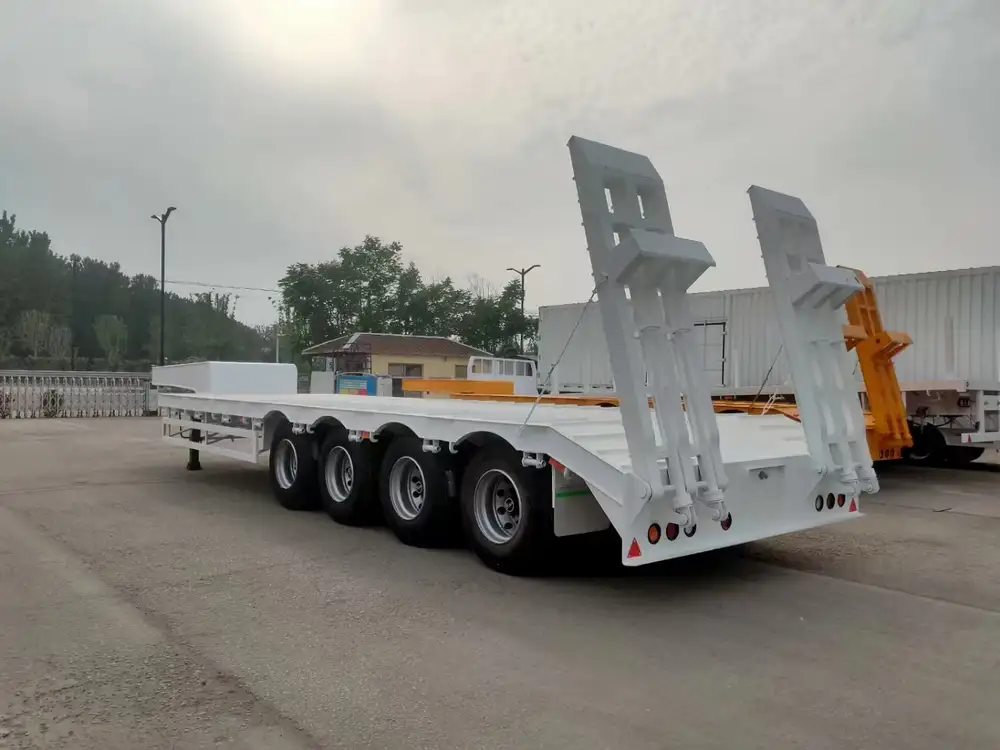
Frequently Asked Questions
1. What is the maximum container height that CarMax Vehicle trailers can accommodate?
Our trailers are designed to accommodate standard containers with an external height of up to 9 feet 6 inches, including high cube containers. Specific models, such as our CarMax High Cube Compatible Trailers, offer enhanced vertical clearance for taller containers.
2. How do I determine the right trailer type for my container size?
Assess the dimensions and weight of your containers, consider the nature of your cargo, and evaluate your route’s clearance requirements. CarMax Vehicle offers various trailer types, including container chassis, flatbeds, and step decks, each tailored to different container sizes and transport needs.
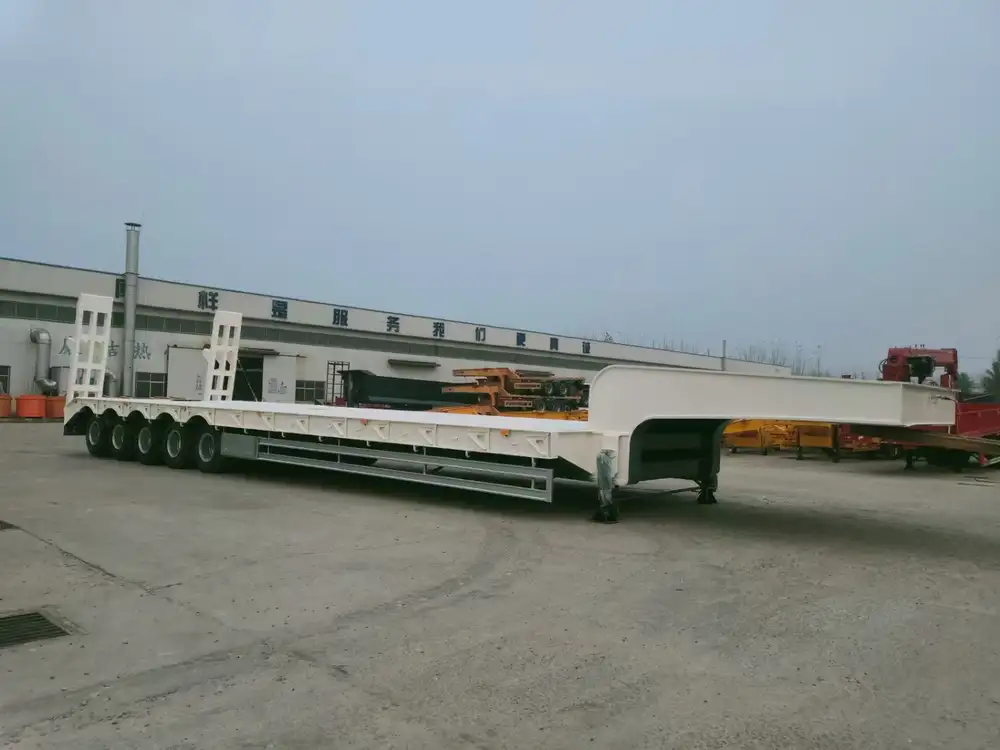
3. Are CarMax Vehicle trailers compliant with international transportation regulations?
Yes, our trailers are engineered to meet and exceed international standards for container transport, including height and weight restrictions. We ensure compliance with regulations set by bodies such as the International Maritime Organization (IMO) and relevant national authorities.
4. What maintenance practices do you recommend for extending trailer lifespan?
Regular inspections, scheduled servicing, prompt replacement of worn parts, and proper storage are essential for extending trailer longevity. Following CarMax Vehicle’s maintenance guidelines will help ensure your trailer remains in optimal condition.
5. Can CarMax Vehicle customize trailers to fit specific container requirements?
Absolutely. We offer customization options to tailor our trailers to your specific container dimensions, load requirements, and operational preferences. Contact our sales team to discuss your unique needs and explore customized trailer solutions.
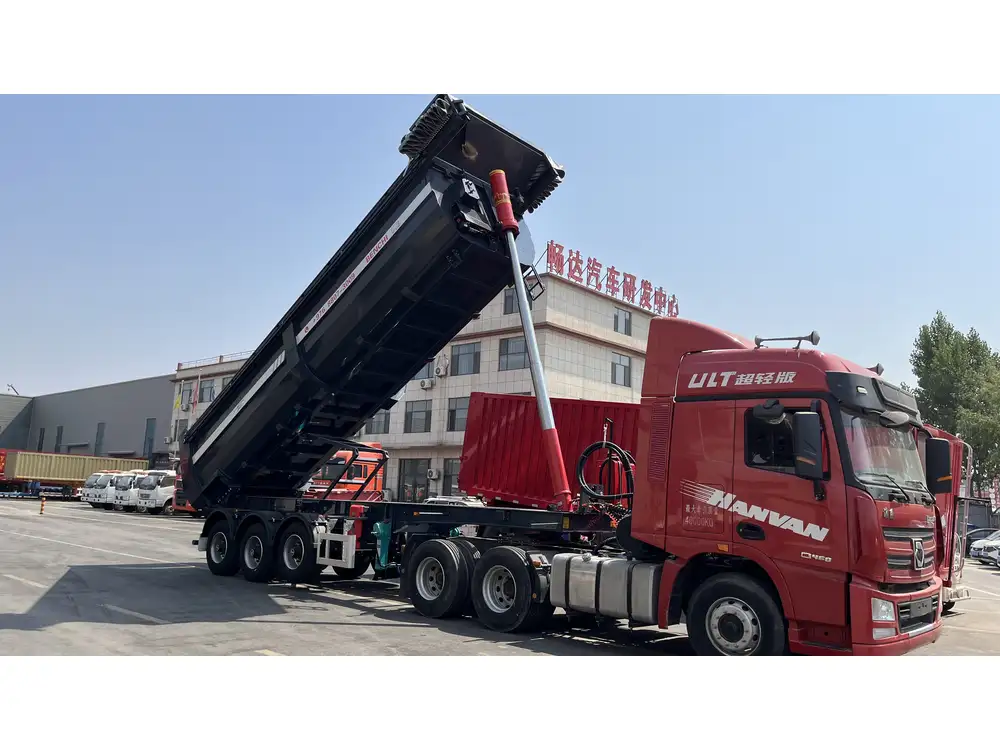
Conclusion
Selecting the right trailer for container transport involves a nuanced understanding of container dimensions, trailer types, regulatory requirements, and operational efficiencies. At CarMax Vehicle, we are committed to providing top-tier trailer solutions designed to meet the diverse needs of the transportation sector. By leveraging our expertise and comprehensive range of products, you can ensure your cargo is transported safely, efficiently, and in compliance with all relevant standards.



